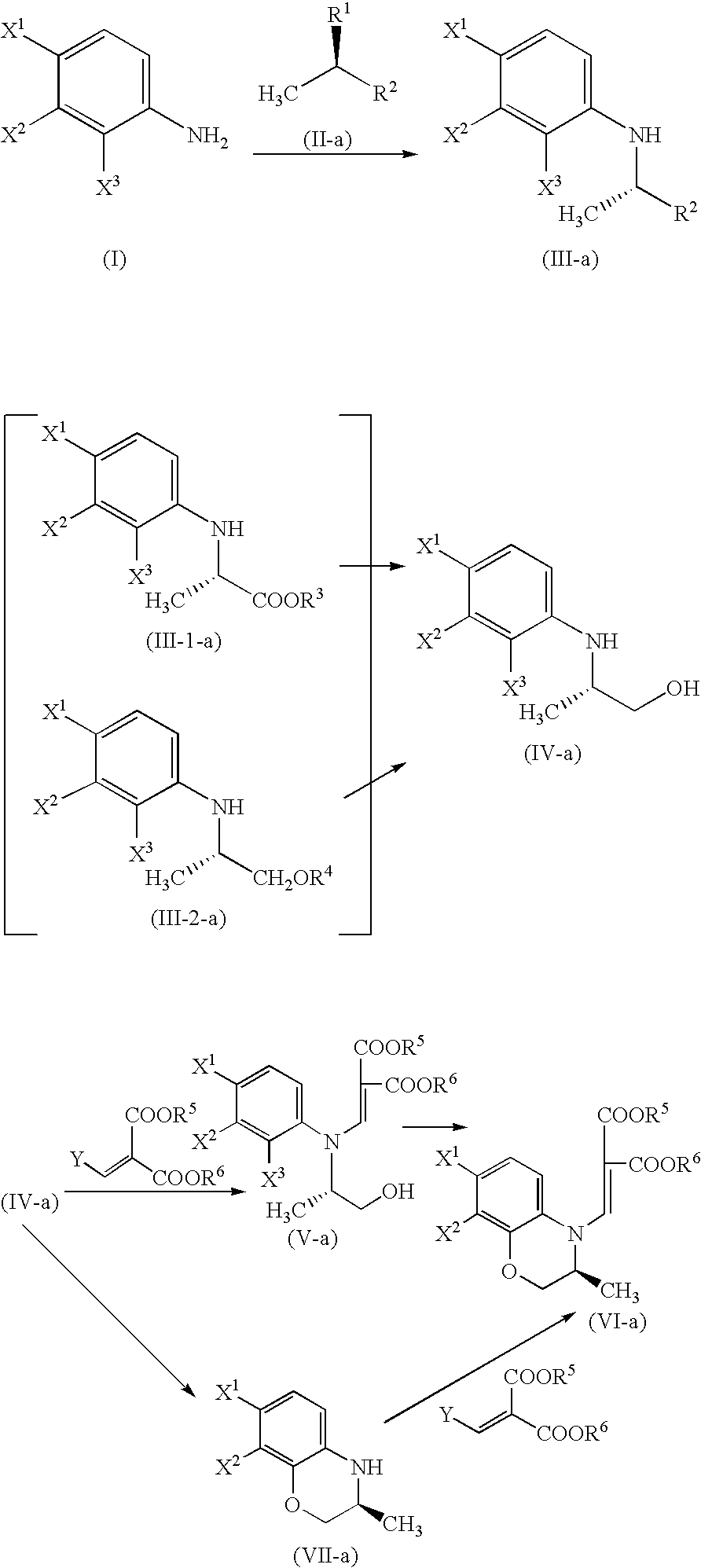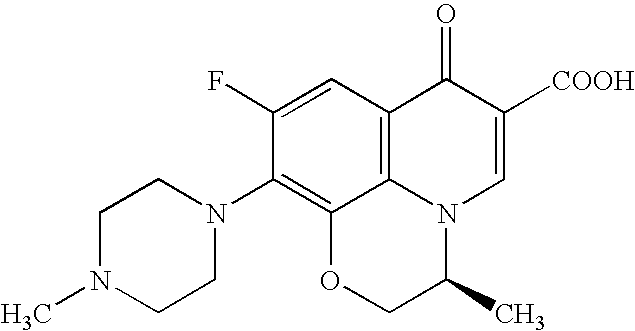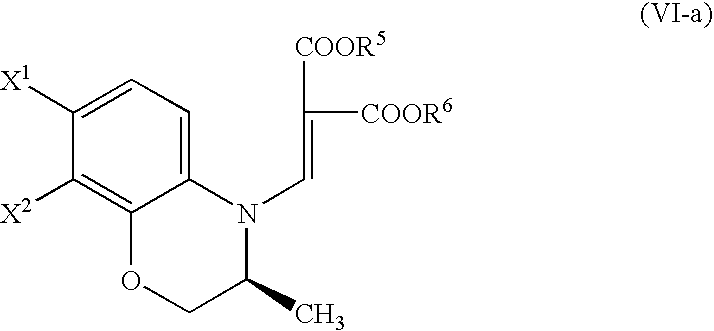Process for producing benzoxazine derivative and production intermediate thereof
- Summary
- Abstract
- Description
- Claims
- Application Information
AI Technical Summary
Benefits of technology
Problems solved by technology
Method used
Image
Examples
example 1
Methyl (2S)-2-(2,3,4-trifluoroanilino)propionate
Under ice-cooling, methyl D-lactate (8.5 g) and 2,6-lutidine (11.4 g) were dissolved in dichloromethane (100 ml). After dropping anhydrous trifluoromethanesulfonic acid (25.4 g), the mixture was heated to room temperature and stirred for 30 minutes. Then it was cooled to 0° C. again and a solution (30 ml) of 2,3,4-trifluoroaniline (12.0 g) in dichloromethane was dropped therein to. The mixture was stirred at the same temperature for 17 hours. To the resultant solution, hydrochloric acid (0.5 mol / l) was added and the mixture was extracted with dichloromethane. The extract was washed with a saturated aqueous solution of sodium chloride, dried over magnesium sulfate and filtered. After evaporating the solvent, the residue thus obtained was subjected to silica gel column chromatography. Thus, 17.1 g (90%) of the title compound was obtained as an oily substance. The optical purity determined by HPLC was 97% ee.
1H-NMR (CDCl3, 270 MHz) δ: ...
example 2
Methyl (2S)-2-(2,3,4-trifluoroanilino)propionate
2,3,4-Trifluoroaniline (100 mg) was dissolved in toluene (1 ml). After adding potassium carbonate (188 mg), methyl (2R)-2-[[(4-methylphenyl)sulfonyl]oxy]propionate (193 mg) and tetrahexylammonium chloride (40 mg), the mixture was stirred under heating and refluxing for 15.5 hours. After treating as in Example 1, the obtained product was analyzed by reversed phase HPLC with the use of the compound of Example 1 as a specimen. As a result, the product corresponded to 41 mg (26%) of the title compound.
example 3
Methyl (2S)-2-(2,3,4-trifluoroanilino)propionate
In accordance with the process of Example 2, a condensation reaction was performed by using 2,3,4-trifluoroaniline (100 mg), potassium carbonate (188 mg), methyl (2R)-2-[(methanesulfonyl)oxy]propionate (78 mg) and tetrahexylammonium chloride (40 mg) to give the title compound as an oily substance. As the result of the analysis by reversed phase HPLC with the use of the compound of Example 1 as a specimen, the product corresponded to 38 mg (24%) of the title compound.
PUM
| Property | Measurement | Unit |
|---|---|---|
| Antimicrobial properties | aaaaa | aaaaa |
| Alkalinity | aaaaa | aaaaa |
| Optical activity | aaaaa | aaaaa |
Abstract
Description
Claims
Application Information
 Login to View More
Login to View More - R&D
- Intellectual Property
- Life Sciences
- Materials
- Tech Scout
- Unparalleled Data Quality
- Higher Quality Content
- 60% Fewer Hallucinations
Browse by: Latest US Patents, China's latest patents, Technical Efficacy Thesaurus, Application Domain, Technology Topic, Popular Technical Reports.
© 2025 PatSnap. All rights reserved.Legal|Privacy policy|Modern Slavery Act Transparency Statement|Sitemap|About US| Contact US: help@patsnap.com



